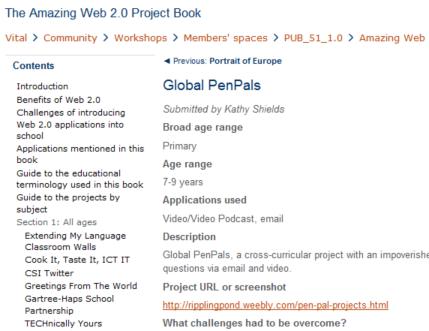I've been watching, and watching and rewatching a video called Play, by David Kaplan and Eric Zimmerman. It's a film which envisages a possibly not-too-distant scenario in which games have become totally immersive. The line between game and reality blur — over and over again.
The first time I watched it I didn't quite 'get' it. The second time I understood it a lot more. The third time I was able to completely enjoy it, and after that I started to think about the possibilities for the ed tech teacher.
I don't think many teachers would feel comfortable showing this to a group of students. A pity, really, because there is so much rich discussion you could have with them. However, there are some risqué elements, like a scene where the main character grabs a woman's breast, followed by some choice words by the recipient of this unwelcome contact, and one with Japanese schoolgirls, which is clearly tongue-in-cheek but which may be unwise to show to a class. Anyway, watch it and decide for yourself.
But if there is a good chance that you will feel unable to show it to your students, why am I bothering to mention it?
Well, there is always the possibility of showing selected scenes, to illustrate points for discussion.
However, even if you watch it only with colleagues, perhaps as part of a team meeting or a staff training day, there is much to discuss. I have always believed, and found, there to be value in having an intellectual discussion for its own sake. This is especially important for teachers: ours is an intellectual profession, so we need to practise being intellectual.
If, having watched the film, you don't think you can use it, pass on the details to colleagues teaching media studies. They may find it interesting to consider how the lines between film, game and reality are not very apparent. There is also a video, on the Future States website (see below), showing the making of the film. I don't think it's very revealing myself, but it may be interesting for students to glimpse what a real film set looks like.
So what sort of issues does the film raise?
One is a moral issue about how points are accumulated. Watch the thug in the first sequence, to see what I mean at its most obvious, but the issue is repeated throughout the film.
Another is to do with truth — not only in the sense of distinguishing game from reality, but in terms of integrity. Look at the choices faced by both the politician and the psychiatrist. There's an element of humour there, but perhaps like much humour it touches a nerve.
There are underlying issues as well, to do with genuineness. For example, all the options presented to the psychiatrist appear to have equal weight. Do professionals like psychiatrists, doctors, even teachers, really ask questions which have no greater value than any of the alternative questions they might have asked instead?
But perhaps this is all getting too deep. Watch the film, which lasts just under 20 minutes, and see what you make of it.
A little background: I found out about this by looking at the Sliced Bread blog, where Tony Searl wrote an article called Future State. I chose to read that at the suggestion of my random blog reading generator.
See also the two articles cited in the References section.
On the topic of games, the forthcoming issue of Computers in Classrooms, the free (woo hoo!) newsletter, is a games special, with articles about 'serious' as well as 'educational' games (the distinction is not mine), reviews and original research from a student's dissertation and BESA, to cite two, plus some great prizes to be given away.

















